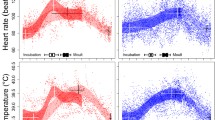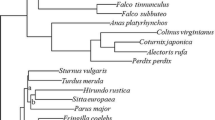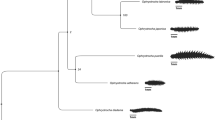Abstract
The oxygen delivery system is one major determinant of the performance of vertebrates and responds sensitively to a variety of internal and environmental factors. To understand physiological mechanisms underlying variations of fitness, we investigated effects of demanding conditions associated with certain life-history events, food availability, and population density on the oxygen delivery system in free-ranging edible dormice (Glis glis). We sampled blood (n = 248) and urine (n = 319), performed an erythrocyte haemogram and visually determined the presence of haemoglobinuria. Reproduction leads to increased mortality in edible dormice and our study now reveals severe haematological impairments during reproduction that were associated with nutrient and energy deficits and stress. These effects were even more pronounced in subsequent reproductive years, indicating prolonged physiological impairment. Under limited food availability, the rate of erythrocyte generation was reduced. This seems to be part of an energy saving strategy instead of representing a poor body condition as survival probability in this species is high in years of low food availability. A high prevalence ratio of haemoglobinuria (up to 85%) at the end of the active season indicated amplified erythrocyte destruction through haemolysis. This may be the result of a preparative mechanism to avoid massive oxidative damage during the long hibernation period. Most ecophysiological studies so far focus on single erythrocyte parameters on a short time scale, which could be misleading. Our results clearly highlight that a wide-array RBC approach is a powerful tool for investigating mechanisms underlying physiological performance and fitness, also for other vertebrate taxa.



Similar content being viewed by others
Abbreviations
- GCs:
-
Glucocorticoids
- PostH:
-
Post-hibernation period
- Rep:
-
Reproductive period
- PreH:
-
Pre-hibernation period
- PostHshort :
-
Shortened post-hibernation period
- PreHshort :
-
Shortened pre-hibernation period
- RAL:
-
Reichsausschuss für Lieferbedingungen, a colour matching system with scaled colours
- RBC:
-
Red blood cell
- T b :
-
Body temperature
References
Aslinia F, Mazza JJ, Yale SH (2006) Megaloblastic anemia and other causes of macrocytosis. Clin Med Res 4:236–241
Belcher JD, Beckman JD, Balla G et al (2009) Heme degradation and vascular injury. Antioxid Redox Signal 12:233–248. doi:10.1089/ars.2009.2822
Beldomenico PM, Telfer S, Gebert S et al (2008) The dynamics of health in wild field vole populations: a haematological perspective. J Anim Ecol 77:984–997. doi:10.1111/j.1365-2656.2008.01413.x
Bieber C, Ruf T (2009) Summer dormancy in edible dormice (Glis glis) without energetic constraints. Naturwissenschaften 96:165–171. doi:10.1007/s00114-008-0471-z
Bieber C, Lebl K, Stalder G et al (2014) Body mass dependent use of hibernation: why not prolong the active season, if they can? Funct Ecol 28:167–177. doi:10.1111/1365-2435.12173
Blobel GA, Orkin SH (1996) Estrogen-induced apoptosis by inhibition of the erythroid transcription factor GATA-1. Mol Cell Biol 16:1687–1694
Boonstra R (2005) Equipped for life: the adaptive role of the stress axis in male mammals. J Mamm 86:236–247. doi:10.1644/BHE-001.1
Boonstra R, McColl CJ, Karels TJ (2001) Reproduction at all costs: the adaptive stress response of male Arctic ground squirrels. Ecology 82:1930–1946. doi:10.1890/0012-9658(2001)082[1930:RAACTA]2.0.CO;2
Brace KC (1953) Life span of the marmot erythrocyte. Blood 8:648–650
Brock MA (1960) Production and life span of erythrocytes during hibernation in the golden hamster. Am J Physiol-Leg Content 198:1181–1186
Carey HV, Frank CL, Seifert JP (2000) Hibernation induces oxidative stress and activation of NF-κB in ground squirrel intestine. J Comp Physiol B 170:551–559. doi:10.1007/s003600000135
Carey HV, Andrews MT, Martin SL (2003) Mammalian hibernation: cellular and molecular responses to depressed metabolism and low temperature. Physiol Rev 83:1153–1181. doi:10.1152/physrev.00008.2003
Cooke SJ, Sack L, Franklin CE, et al (2013) What is conservation physiology? Perspectives on an increasingly integrated and essential science. Conserv Physiol 1:cot001. doi:10.1093/conphys/cot001
Costantini D, Marasco V, Møller AP (2011) A meta-analysis of glucocorticoids as modulators of oxidative stress in vertebrates. J Comp Physiolv B 181:447–456. doi:10.1007/s00360-011-0566-2
Dukes PP, Goldwasser E (1961) Inhibition of erythropoiesis by estrogens. Endocrinology 69:21–29. doi:10.1210/endo-69-1-21
Fietz J, Weis-Dootz T (2012) Stranded on an island: consequences of forest fragmentation for body size variations in an arboreal mammal, the edible dormouse (Glis glis). Popul Ecol 54:313–320. doi:10.1007/s10144-012-0310-0
Fietz J, Schlund W, Dausmann KH, Regelmann M, Heldmaier G (2004) Energetic constraints on sexual activity in the male edible dormouse (Glis glis). Oecologia 138:202–209. doi:10.1007/s00442-003-1423-0
Fietz J, Pflug M, Schlund W, Tataruch F (2005) Influences of the feeding ecology on body mass and possible implications for reproduction in the edible dormouse (Glis glis). J Comp Physiol B 175:45–55. doi:10.1007/s00360-004-0461-1
Fietz J, Kager T, Schauer S (2009) Is energy supply the trigger for reproductive activity in male edible dormice (Glis glis)? J Comp Physiol B 179:829–837. doi:10.1007/s00360-009-0364-2
Fietz J, Tomiuk J, Loeschcke V et al (2014) Genetic consequences of forest fragmentation for a highly specialized arboreal mammal—the edible dormouse. PLoS ONE 9:e88092. doi:10.1371/journal.pone.0088092
Fietz J, Langer F, Havenstein N et al (2015) The vector tick Ixodes ricinus feeding on an arboreal rodent-the edible dormouse Glis glis. Parasitol Res 115:1435–1442. doi:10.1007/s00436-015-4877-1
Fisher JW, Crook JJ (1962) Influence of several hormones on erythropoiesis and oxygen consumption in the hypophysectomized rat. Blood 19:557–565
Fox J, Weisberg S (2010) An R companion to applied regression. Sage, California
Franzmann AW, Leresche RE (1978) Alaskan moose blood studies with emphasis on condition evaluation. J Wildl Manag 42:334–351. doi:10.2307/3800270
Havenstein N, Langer F, Stefanski V, Fietz J (2016) It takes two to tango: phagocyte and lymphocyte numbers in a small mammalian hibernator. Brain Behav Immun 52:71–80. doi:10.1016/j.bbi.2015.09.018
Hoffman R, Benz EJ Jr, Silberstein LE et al (2013) Hematology: diagnosis and treatment. Elsevier Health Sciences, Amsterdam
Huitu O, Jokinen I, Korpimäki E et al (2007) Phase dependence in winter physiological condition of cyclic voles. Oikos 116:565–577. doi:10.1111/j.0030-1299.2007.15488.x
Jarolim P, Lahav M, Liu SC, Palek J (1990) Effect of hemoglobin oxidation products on the stability of red cell membrane skeletons and the associations of skeletal proteins: correlation with a release of hemin. Blood 76:2125–2131
Jégo M, Lemaître J-F, Bourgoin G et al (2014) Haematological parameters do senesce in the wild: evidence from different populations of a long-lived mammal. J Evol Biol 27:2745–2752. doi:10.1111/jeb.12535
Johnstone CP, Lill A, Reina RD (2015) Use of erythrocyte indicators of health and condition in vertebrate ecophysiology: a review and appraisal. Biol Rev. doi:10.1111/brv.12219
Kalmbach E, Griffiths R, Crane JE, Furness RW (2004) Effects of experimentally increased egg production on female body condition and laying dates in the great skua Stercorarius skua. J Avian Biol 35:501–514. doi:10.1111/j.0908-8857.2004.03271.x
Keohane E, Smith L, Walenga J (2015) Rodak’s hematology: clinical principles and applications. Elsevier Health Sciences, Amsterdam
Koury MJ, Ponka P (2004) New insights into erythropoiesis: the roles of folate, vitamin B12, and iron. Annu Rev Nutr 24:105–131. doi:10.1146/annurev.nutr.24.012003.132306
Kruman II (1992) Comparative analysis of cell replacement in hibernators. Comp Biochem Physiol A Physiol 101:11–18. doi:10.1016/0300-9629(92)90620-6
Kumar D, Rizvi SI (2014) Markers of oxidative stress in senescent erythrocytes obtained from young and old age rats. Rejuvenation Res 17:446–452. doi:10.1089/rej.2014.1573
Kurata M, Suzuki M, Agar NS (1993) Antioxidant systems and erythrocyte life-span in mammals. Comp Biochem Physiol B 106:477–487
Lang K, Lang P, Bauer C et al (2005) Mechanisms of suicidal erythrocyte death. Cell Physiol Biochem 15:195–202. doi:10.1159/000086406
Lebl K, Bieber C, Adamik P et al (2011) Survival rates in a small hibernator, the edible dormouse: a comparison across Europe. Ecography 34:683–692. doi:10.1111/j.1600-0587.2010.06691.x
Lindell SL, Klahn SL, Piazza TM et al (2005) Natural resistance to liver cold ischemia–reperfusion injury associated with the hibernation phenotype. Am J Physiol Gastrointest Liver Physiol 288:G473–G480. doi:10.1152/ajpgi.00223.2004
Lipschitz D (2003) Medical and functional consequences of anemia in the elderly. J Am Geriatr Soc 51:10–13. doi:10.1046/j.1532-5415.51.3s.6.x
Lodish H, Flygare J, Chou S (2010) From stem cell to erythroblast: regulation of red cell production at multiple levels by multiple hormones. IUBMB Life 62:492–496. doi:10.1002/iub.322
Lutz HU, Bogdanova A (2013) Mechanisms tagging senescent red blood cells for clearance in healthy humans. Front Physiol. doi:10.3389/fphys.2013.00387
Lyman CP, Weiss LP, O’Brien RC, Barbeau AA (1957) The effect of hibernation on the replacement of blood in the golden hamster. J Exp Zool 136:471–485. doi:10.1002/jez.1401360305
Mairbäurl H (2013) Red blood cells in sports: effects of exercise and training on oxygen supply by red blood cells. Front Physiol. doi:10.3389/fphys.2013.00332
Metz J (1970) Folate deficiency conditioned by lactation. Am J Clin Nutr 23:843–847
Moore IT, Hopkins WA (2009) Interactions and trade-offs among physiological determinants of performance and reproductive success. Integr Comp Biol. doi:10.1093/icb/icp081
Oishi K, Yokoi M, Maekawa S et al (1999) Oxidative stress and haematological changes in immobilized rats. Acta Physiol Scand 165:65–69. doi:10.1046/j.1365-201x.1999.00482.x
Orzechowski A, Ostaszewski P, Wilczak J et al (2002) Rats with a glucocorticoid-induced catabolic state show symptoms of oxidative stress and spleen atrophy: the effects of age and recovery. J Vet Med A Physiol Pathol Clin Med 49:256–263
Ots I, Murumägi A, Hõrak P (1998) Haematological health state indices of reproducing great tits: methodology and sources of natural variation. Funct Ecol 12:700–707. doi:10.1046/j.1365-2435.1998.00219.x
Picciano MF (2003) Pregnancy and lactation: physiological adjustments, nutritional requirements and the role of dietary supplements. J Nutr 133:1997S–2002S
Pinheiro J, Bates D, DebRoy S, Deepayan S (2016) nlme: linear and nonlinear mixed effects models. R package version 3.1–125. http://CRAN.R-project.org/package=nlme
Potti J, Moreno J, Merino S et al (1999) Environmental and genetic variation in the haematocrit of fledgling pied flycatchers Ficedula hypoleuca. Oecologia 120:1–8. doi:10.1007/s004420050826
Ruf T, Geiser F (2015) Daily torpor and hibernation in birds and mammals. Biol Rev 90:891–926. doi:10.1111/brv.12137
Ruf T, Fietz J, Schlund W, Bieber C (2006) High survival in poor years: life history tactics adapted to mast seeding in the edible dormouse. Ecology 87:372–381. doi:10.1890/05-0672
Santos-Silva A, Rebelo MI, Castro EMB et al (2001) Leukocyte activation, erythrocyte damage, lipid profile and oxidative stress imposed by high competition physical exercise in adolescents. Clin Chim Acta 306:119–126. doi:10.1016/S0009-8981(01)00406-5
Scanlon KS, Yip R, Schieve LA, Cogswell ME (2000) High and low hemoglobin levels during pregnancy: differential risks for preterm birth and small for gestational age. Obstet Gynecol 96:741–748
Schlund W (2005) Siebenschläfer Glis glis (Linnaeus, 1766). In: Braun M, Dieterlen F (eds). Die Säugetiere Baden-Württembergs, vol 2. Ulmer GmbH & Co, Stuttgart, pp 199–210
Sivilotti MLA (2004) Oxidant stress and haemolysis of the human erythrocyte. Toxicol Rev 23:169–188
Smith JA (1995) Exercise, training and red blood cell turnover. Sports Med 19:9–31. doi:10.2165/00007256-199519010-00002
Suckow MA, Weisbroth SH, Franklin CL (2005) The laboratory rat. Academic Press, Orlando
Szilagyi JE, Senturia JB (1974) Erythrocyte changes in the hibernating woodchuck (Marmota monax). Cryobiology 11:478–481. doi:10.1016/0011-2240(74)90116-3
Tyler RD, Cowell RL (1996) Classification and diagnosis of anaemia. Comp Haematol Int 6:1–16. doi:10.1007/BF00368096
Weinsier RL, Hunker EM, Krumdieck CL, Butterworth CE (1979) Hospital malnutrition. A prospective evaluation of general medical patients during the course of hospitalization. Am J Clin Nutr 32:418–426
Weiss DJ, Wardrop KJ (2011) Schalm’s veterinary hematology. Wiley, Philadelphia
Wikelski M, Cooke SJ (2006) Conservation physiology. Trends Ecol Evol 21:38–46. doi:10.1016/j.tree.2005.10.018
Willekens FLA, Bosch FH, Roerdinkholder-Stoelwinder B et al (1997) Quantification of loss of haemoglobin components from the circulating red blood cell in vivo. Eur J Haematol 58:246–250. doi:10.1111/j.1600-0609.1997.tb01662.x
Zancanaro C, Malatesta M, Mannello F et al (1999) The kidney during hibernation and arousal from hibernation. A natural model of organ preservation during cold ischaemia and reperfusion. Nephrol Dial Transplant 14:1982–1990. doi:10.1093/ndt/14.8.1982
Acknowledgements
We thank E. Becker, C. Franke, F. Hofmann, J. Saar, and V. Stefanski for support in the field and/or laboratory. Financial support was provided by the Deutsche Forschungsgemeinschaft (FI 831/5-1 and FI 831/6-1) to JF.
Author contributions
NH and JF conceived and designed experiments. NH, FL, and JF conducted field work. NH conducted laboratory work and analyzed the data. NH and JF wrote the manuscript.
Author information
Authors and Affiliations
Corresponding author
Ethics declarations
Conflict of interest
The authors declare that they have no conflict of interest.
Ethical approval
This article does not contain any studies with human participants performed by any of the authors. All applicable international and national guidelines for the care and use of animals were followed. Our studies were conducted under license from the Nature Conservancy (Permit Number: 55-6/8852.15-1) and the Committee on the Ethics of Animal Experiments of the Regional Commission of Tübingen (Permit Number: HOH 25/13).
Additional information
Communicated by G. Heldmaier.
Electronic supplementary material
Below is the link to the electronic supplementary material.
Rights and permissions
About this article
Cite this article
Havenstein, N., Langer, F. & Fietz, J. Life history written in blood: erythrocyte parameters in a small hibernator, the edible dormouse. J Comp Physiol B 188, 359–371 (2018). https://doi.org/10.1007/s00360-017-1111-8
Received:
Revised:
Accepted:
Published:
Issue Date:
DOI: https://doi.org/10.1007/s00360-017-1111-8




